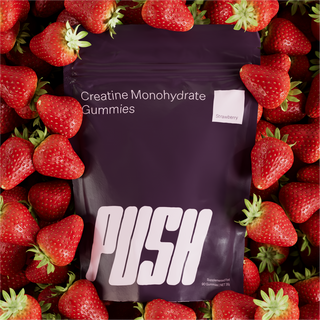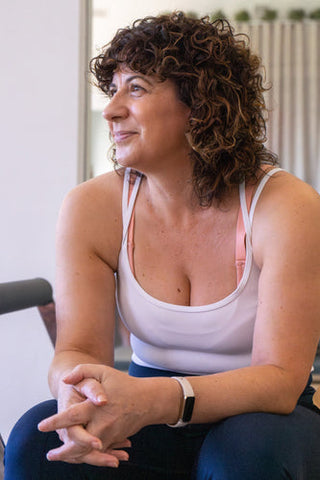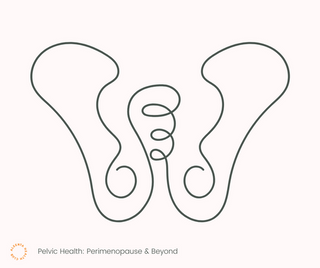From New York City to global stardom: a century of the unstoppable Pilates method.
Pilates has survived fickle trend culture time and again – and remains a total chonk in health and fitness culture – because it can be stretched and moulded in new ways to adapt with us over time.
It's just as useful right now as it was when founder Joseph Pilates opened his first studio in the 1920s.
Aleenta Training cofounder and master trainer Alicia Harvie says: “What I love is, Pilates can be nurturing and gentle for the people who need it, or challenging for the fitness junkie.
“From a teaching perspective, I try to offer clients both the classical and modern approaches and continually adapt the movements to reflect new fitness research and best practice.
“Pilates allows for that flexibility.”

What is Pilates?
Pilates n. a system of exercises using special apparatus (equipment), designed to improve physical strength, flexibility and posture, and enhance mental awareness. [named after the German physical fitness specialist Joseph Pilates (d.1967) who devised the system]
This is the description assigned by the Australian Concise Oxford Dictionary.
And it’s a good starting point.
It wasn’t always called Pilates, though. And it certainly wasn’t always so freely changeable.
Thirsty? Read on for the juice.
Why are all Pilates classes different?
Do you ever wonder how every “Pilates” teacher, class, and studio can be so different?
Well, all Pilates – we hope – retains a focus on looping in your core strength (abdominal, pelvic & spinal muscles) with breath work and body awareness.
The aim? Preventive health care, baby! (ii)
But there can be quite a chasm between traditional/classical Pilates and contemporary styles.
You'll even find the styles themselves vary depending on your teacher and the intention behind the workout.
Our health & fitness sector Down Under has clear guidelines about exercise principles and safety (i), which we love.
But when it comes to the theme, intensity, choreography, and execution of classes, your teachers have a lot of creative freedom.
An open mind is the first essential (grip socks, a close second) as you venture into the studio to find the movement that speaks to you.
“Change happens through movement, and movement heals” – Joseph Pilates

The Pilates Method: A condensed history
Many moons ago, the mysterious German national Joseph Pilates sailed by ship to New York City. He opened his first physical training studio with his third wife, Clara, in 1926.
His studio trained people in a physical discipline he called “Contrology”.
Pilates had spent years developing it – by some accounts he honed his skills and refined the movements on his fellow inmates in a British internment camp, where he was held during WWI.
“When I trained in Pilates almost 15 years ago, there was one simple, blissful story about Joseph Pilates,” says Alicia, “but research has since been released that humanises him as a man living through some of the darkest periods of European history to start a movement trend that swept the world.”
Whatever JP may or may not have been – Alicia recommends a flick through the pages of Caged Lion: Joseph Pilates and His Legacy by John Howard Steel (iii) – it’s clear he was a skilled healer, teacher & inventor.
He developed the original 34 Contrology (iv) exercises for the mat, published in his book The Pilates Method: Return to Life Through Contrology (v), as a form of daily medicinal movement to counteract what he considered a pandemic of ill health borne of an increasingly sedentary way of life.

Pilates said of Contrology, “you will feel better in ten sessions, look better in twenty sessions, and have a completely new body in thirty sessions.”
He had patented 26 apparatus, including the first ever Reformer, before he passed away in 1967, when his Contrology disciples preserved his memory in the name of his now globally renowned eponymous method.

A focused man, Pilates developed these physical conditioning practices and equipment with a specific purpose: the alignment of mind, body & spirit. How, you may ask?
“Above all, learn how to breathe correctly” – Joseph Pilates
This alignment occurs through harnessing the biomechanics of your breathing cycle.
Simply cultivating the habit of breathing well can send a ripple effect through your nervous systems to your muscles, fascia, organ networks and beyond to improve mind-body connection and, through that, overall health and sense of wellbeing.
Joseph Pilates expanded this understanding into using an exhale when you want to exert maximum effort and control – to contract the “powerhouse” (abdominal core) muscles – on the most forceful part of the movement in the ridgy-didge 34 Contrology exercises.
What sort of Pilates is best?
Some teachers say optimal health is best achieved through whole-body Contrology exercises (true) while others say strengthening your abdominal core, glutes and the rest of the body in a more targeted fashion is more effective (also true).
How can both be true?
Alicia says this depends on your body’s needs, your intention, and the benefits you’re looking for!
“Your teacher’s skill level in delivering a client-centred class is also a factor,” she says. “Try different things and over time you’ll find what works for you!”
If you’ve ever done a modern Pilates group sesh or a Youtube class, you know there’s always a moment of, “you say do what now with a magic circle?”
Language, coordination of your limbs, and exercise progressions and variations are inspired by everything from ballet to capoeira, and there are so darn many ways to make your booty burn.
And then there's the choice between Mat & Reformer classes!
Get in touch with our team at hello@aleenta.club if you're keen to know more about what we offer.
Check out our class styles here.

3 reasons you’re going to love Pilates
The changeable nature of Pilates means it can be brought to life in every body. In the hands of the right teacher, you’ll feel the benefits within a few sessions.
Pilates is adaptable
Contemporary & classical Pilates movements can be adjusted to suit you at any time of life, to improve health, build strength and reduce pain.
As the man himself said, “physical fitness is the first requisite of happiness.”
Whether you’re using a mat or reformer (or any other apparatus), props like hand weights, bands, a ball or bala bangles (omg make it stop), you’ll be amazed at the variety of different ways to improve your strength, flexibility & mobility.
Pilates is creative
Teachers have a lot of freedom in terms of creative expression in their class choreography within the foundations of Pilates & fitness training principles.
We operate on the basis that “a few well-designed movements, properly performed in a balanced sequence, are worth hours of doing sloppy calisthenics or forced contortion.”
Similarly, as you become more experienced, you get to choose how to express these movements to get the best benefits for your body!
Pilates is a whole body integration
Whether you’re here for the endorphins, aesthetic results, therapeutic benefits, nervous system regulation, to get stronger, mind-body connection, or the floaty sense of wellbeing as you walk out after a session, you’ll reap more benefits than the ones you came for!
Pilates is proper soul food.
References.
(i) Exercise Guidelines and Policies. (2024). AusActive https://ausactive.org.au/policies_category/exercise-guidelines/
(ii) Menzies, R. (22 April 2021). 19 Pilates Benefits Backed by Science. Healthline. https://www.healthline.com/nutrition/pilates-benefits
(iii) Steel, J. (2020). Caged Lion: Joseph Pilates and His Legacy. Last Leaf Press. https://www.johnhowardsteel.com/book
(iv) Idit Spiro. (27 September 2021). Pilates Original 34 Exercises from Return to Life Through Contrology. YouTube. https://www.youtube.com/watch?v=qkdhm5r8NoQ
(v) Pilates, J & Miller, W. (2021). Pilates' Return to Life Through Contrology. Mockingbird Press.
Image Credits.





